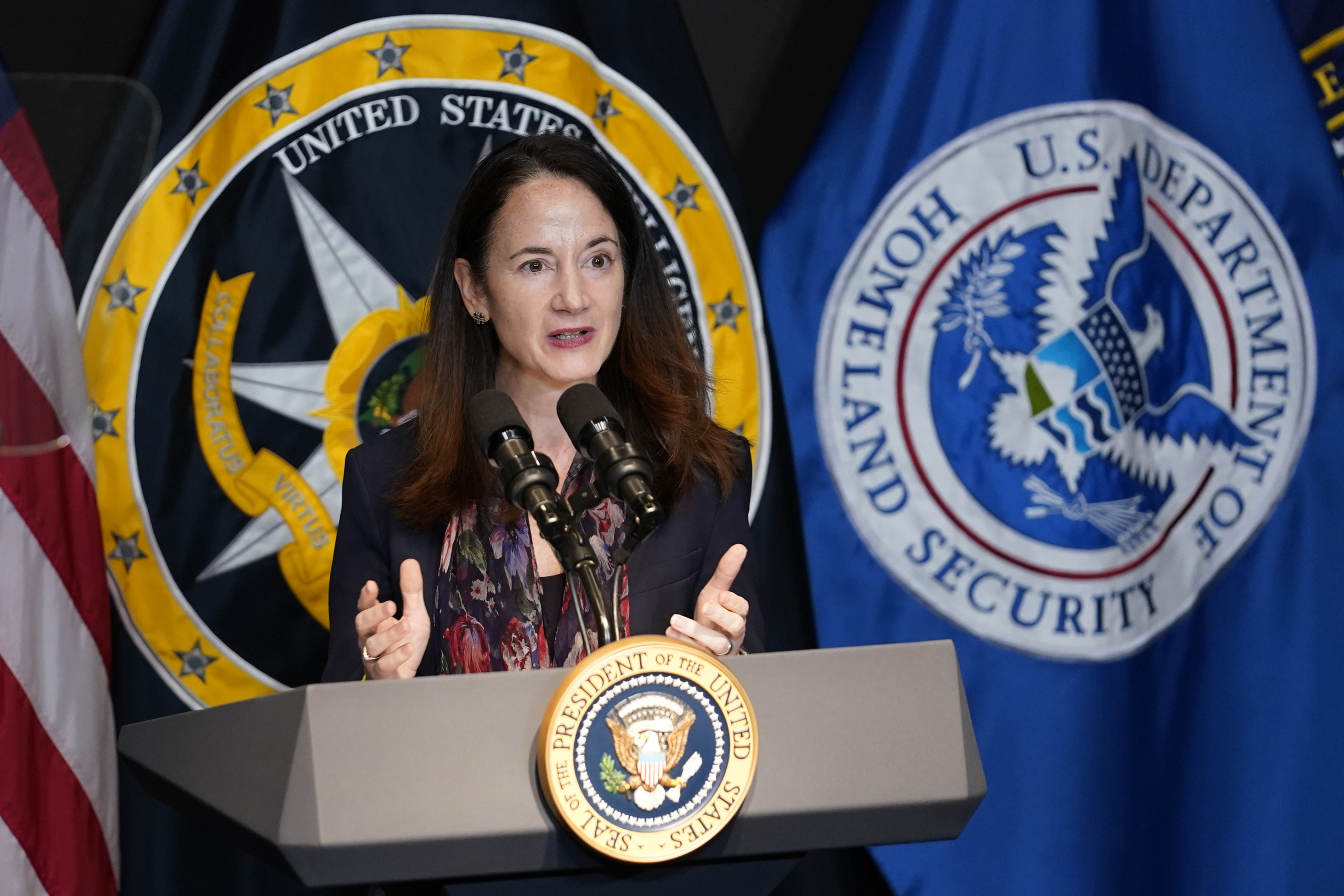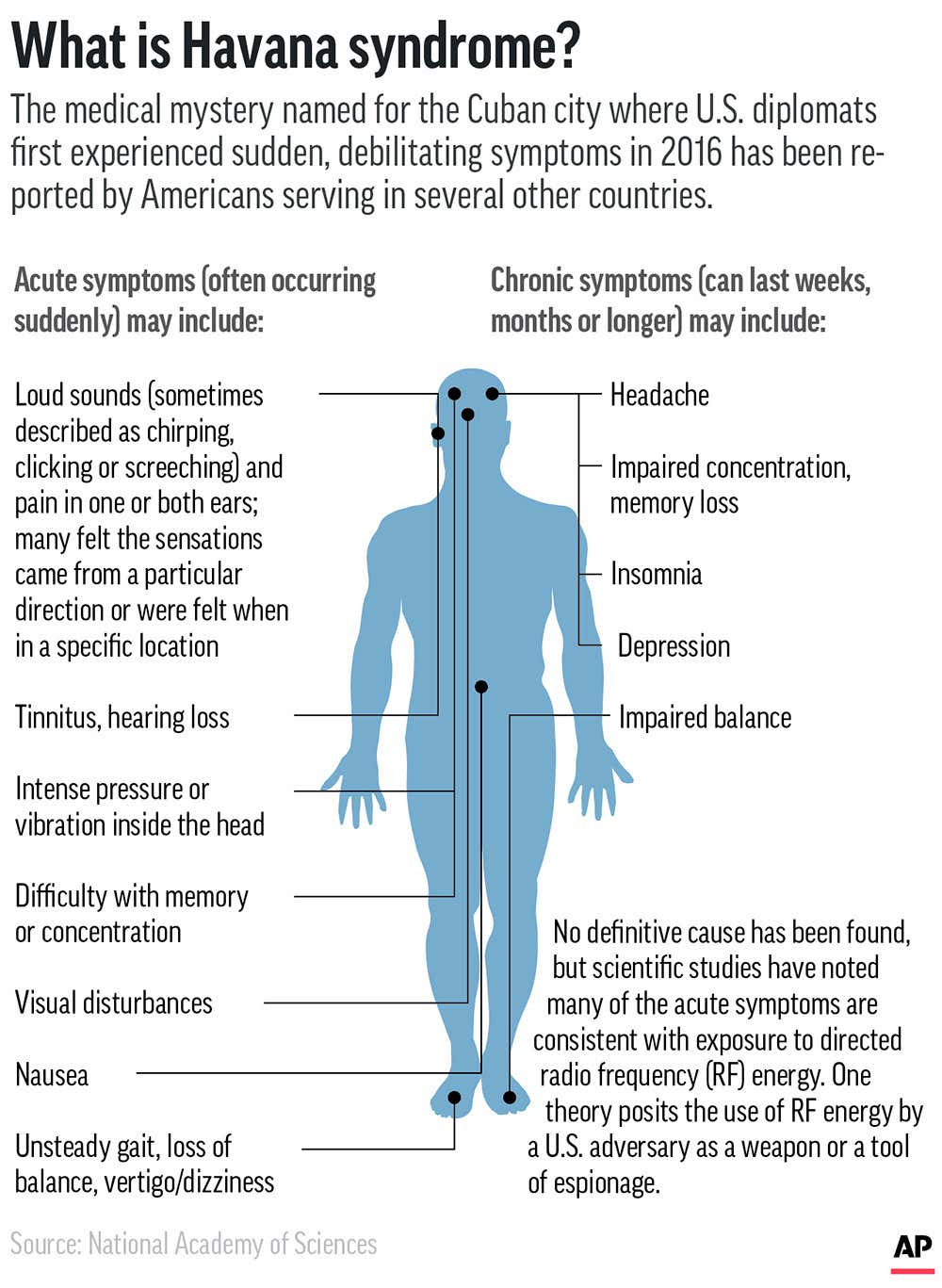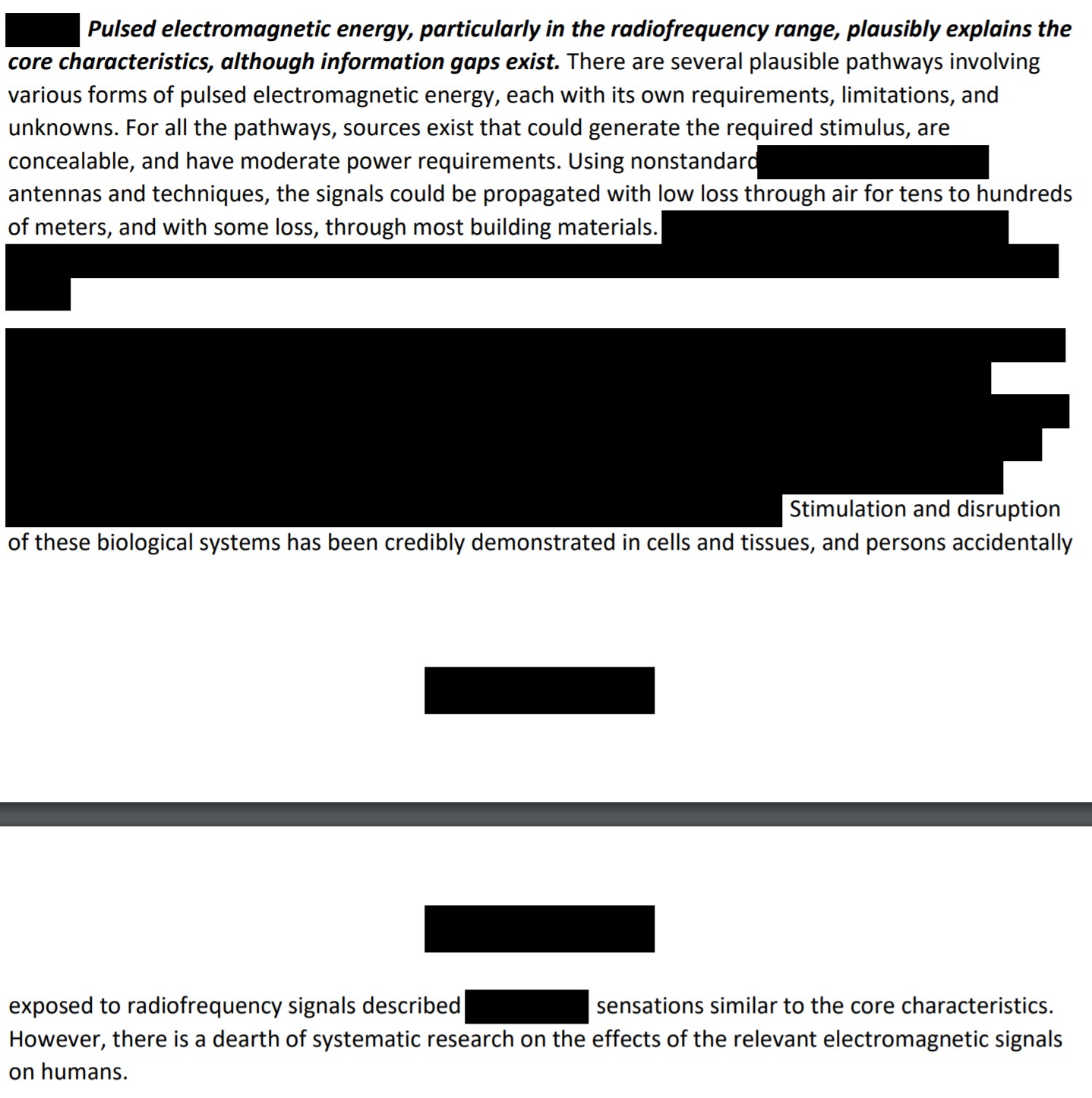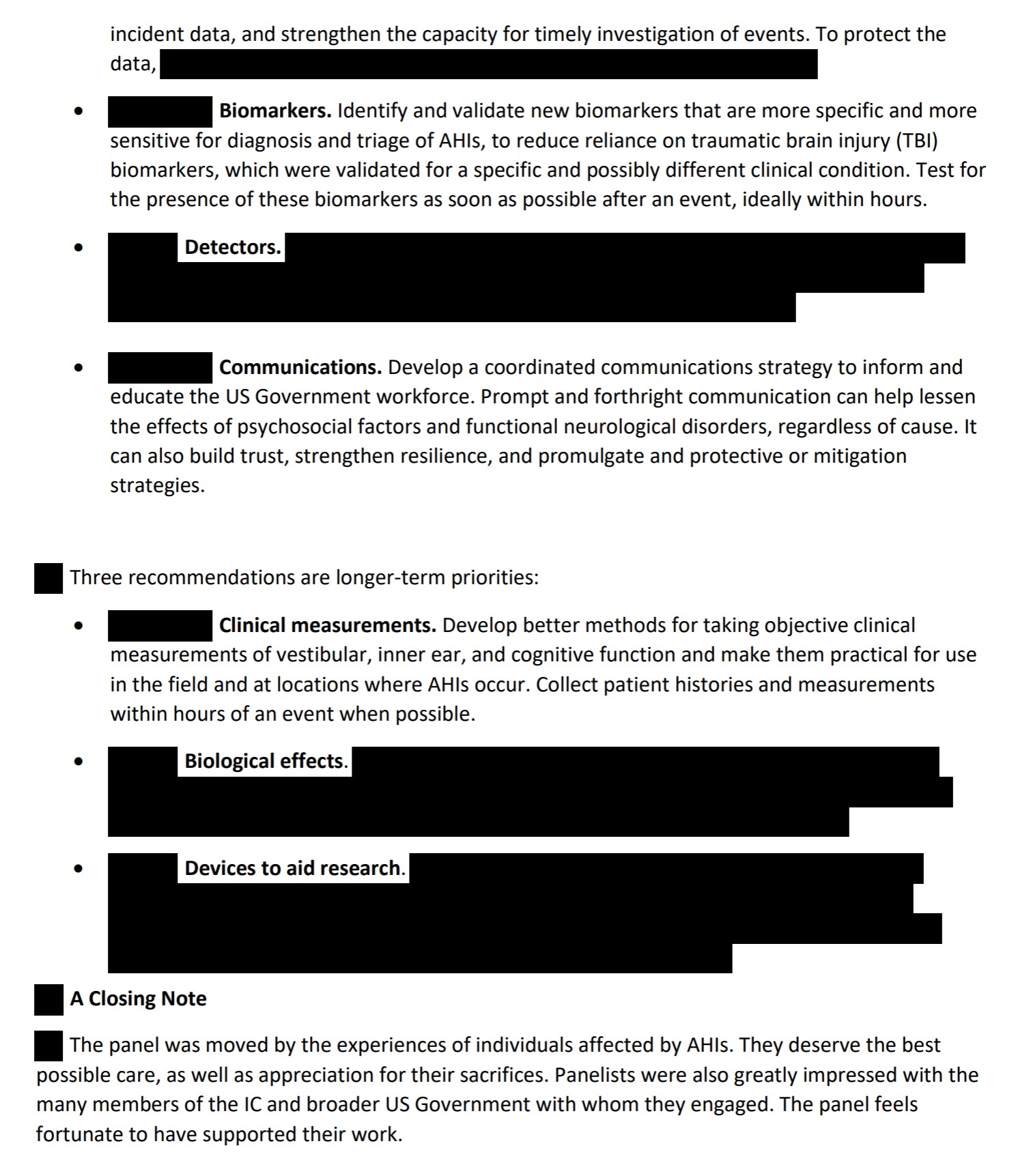A panel made up of a mix of independent experts and those within the U.S. intelligence community has determined that the majority of the reports of Havana Syndrome can be explained by environmental or medical factors, not a foreign power using a directed energy weapon as has been widely speculated. However, the panel’s executive summary published today found that “pulsed electromagnetic energy” still remains a plausible theory for a subset of incidents that remain unexplained. Ultimately, the report’s summary states that “information gaps” prevent a conclusive determination of what could be behind these anomalous health incidents.
Director of National Intelligence Avril D. Haines and Director of the Central Intelligence Agency William J. Burns issued a statement along with an executive summary of the panel’s findings concerning Havana Syndrome, a broad set of neurological symptoms that were first reported in 2016 by staff working at the U.S. Embassy in Havana, Cuba. In the years following those initial reports, multiple U.S. embassy personnel and intelligence officers worldwide have reported similar symptoms, sometimes requiring medical evacuation. For an overview of Havana Syndrome and the discussion surrounding it, catch up by reading our prior reporting on the topic, including details of the CIA’s interim report released to journalists earlier this month.
According to the statement released by Haines and Burns today, a subset of the reported anomalous health incidents (AHIs) believed to be related to Havana Syndrome “cannot be easily explained by known environmental or medical conditions and could be explained by certain external factors.”

The ODNI’s executive summary published today lists the panel’s six main findings concerning reported cases of Havana Syndrome, or AHIs. The findings, some of which are heavily redacted, include:
– The signs and symptoms of AHIs are genuine and compelling.
– A subset of AHIs cannot be easily explained by known environmental or medical conditions and could be due to external stimuli.
– Pulsed electromagnetic energy, particularly in the radiofrequency range, plausibly explains the core characteristics, although information gaps exist.
– Ultrasound also plausibly explains the core characteristics, but only in close-access scenarios and with information gaps.
– Psychosocial factors alone cannot account for the core characteristics, although they may cause some other incidents or contribute to long-term symptoms.
– Ionizing radiation, chemical and biological agents, infrasound, audible sound, ultrasound propagated over large distances, and bulk heating from electromagnetic energy are all implausible explanations for the core characteristics in the absence of other synergistic stimuli.
To come to these conclusions, the panel reviewed over 1,000 classified documents and dozens of briefings that were provided by various departments and agencies that were not specified in the report. They then examined a variety of mechanisms that the intelligence community has identified as potential causes of anomalous health incidents and assessed whether or not each mechanism could cause reported AHI symptoms.

Finally, the panel evaluated the plausibility of these potential mechanisms, rating them as plausible only if “all members agreed there was at least some credible evidence that it was technically and practically feasible.” The five criteria by which they evaluated the plausibility of potential mechanisms were: “a concealable source that could generate the required stimulus; propagation of the stimulus to an individual; coupling of the stimulus to the human body; ability of the coupling to cause biological effects; and ability of the biological effects to explain the reported clinical signs and symptoms.”
Using this methodology, the authors of the executive summary conclude that there are “several plausible pathways” that could cause reported Havana Syndrome symptoms that involve “various forms of pulsed electromagnetic energy, each with its own requirements, limitations, and unknowns.” For each of these, ODNI says, “sources exist that could generate the required stimulus, are concealable, and have moderate power requirements.”

The ODNI’s executive summary concludes with seven recommendations to help the U.S. government better understand and respond to these reported anomalous health incidents. Those recommendations include:
– Collecting and coordinating data throughout the U.S. government
– Identifying and validating biomarkers that are specific to AHIs
– Developing methods for “taking objective clinical measurements of vestibular, inner ear, and cognitive function and make them practical for use in the field and at locations where AHIs occur”
– Developing a communications strategy to inform and educate the U.S. government workforce
There are also three entirely redacted paragraphs within this recommendation section, under the headings “Detectors,” “Biological Effects,” and “Devices to aid research.”

The summary states that the panel “did not examine questions related to attribution of AHIs to an actor, including the question of whether a foreign actor may be involved.” That question has been at the forefront of the Havana Syndrome discussion over the last several years, and members of Congress were previously briefed that these incidents were the result of attacks. U.S. officials have previously stated there is “no reason to believe this was anything but an intentional act.”

While the ODNI’s report did not determine a possible cause for the many anomalous health incidents reported by diplomats and government personnel worldwide, it does state that “pulsed electromagnetic energy” remains a plausible explanation. However, just because this mechanism is plausible does not mean it’s necessarily likely. As the ODNI’s executive summary points out, there are significant information gaps surrounding the pulsed electromagnetic energy theory and, in particular, “a dearth of systematic research on the effects of the relevant electromagnetic signals on humans.” While the panel found this theory to be plausible based on currently available information, there is no mention in the summary of how confident they are in their analysis, and it’s always possible that further information could come to light in the future that refutes the current analysis. The summary points out that it is only “one of several inputs” that will inform the intelligence community’s continued investigation of Havana Syndrome and/or AHIs.
Ultimately, the findings are consistent with the CIA’s assessment released to the media earlier this month that found the vast majority of Havana Syndrome reports are likely due to environmental factors like stress or previously undiagnosed medical conditions. Still, many are likely to read into the ODNI’s assessment that pulsed electromagnetic energy is a “plausible” mechanism as evidence that these health incidents are, in fact, caused by some sort of directed energy weapon. There is already reporting that comes to the same conclusion.
Some lawmakers have already reacted to today’s release. Senate Intelligence Committee Chair Mark Warner (D-VA) said that while he welcomes the panel’s findings, they only “underscore the need to continue investigating the source of these symptoms, and prioritizing access to care for those suffering from these medical conditions.” House Intelligence Committee Chair Adam Schiff (D-CA) echoed Warner, stating that he looks forward to examining the classified findings of the expert panel. “Let me stress, though this and other recent IC efforts have helped to answer important questions we have about these incidents,” Schiff’s statement reads, “much more remains to be done – and must be.”
Just like every other development related to Havana Syndrome over the last five years, the ODNI’s report is sure to add to the ongoing debate surrounding these health incidents and the U.S. government’s response to it.
Contact the author: Brett@TheDrive.com
